Arlington RACES Net Hams Go Portable During Winter Field Day
K3SRF – Shenandoah River State Park in Virginia
My portable Winter Field Day operation took place at Shenandoah River State Park in Virginia. I set up at a campground that had restrooms and hot water as well as GFCI outlets I could use to recharge my battery. The campground was also host to a Scout troop and many families. My dipole, 33 feet in length, was the right thing in the woods as a longer antenna would have been tough to set up through the branches. After powering up, I could hear stations all over the United States and Canada, but they could not always hear me. With my 20 watt SGC-2020 transceiver, lead acid motorcycle battery in a “jump box,” and dipole I made 12 phone contacts on 40 and 20 meters, including Texas, Minnesota, Alabama, and Illinois. I mostly listened for strong stations and waited my turn to call them to find out if they could copy me. The 40 meter band was noisy but busy, and 20 meters was good. I could hear stations on 15 meters, but I did not make any contacts on that band. My little dipole wouldn’t load on 80 meters. I was unable to operate part of the time due to rain but was adequate. I had fun and met one other ham at the campground.
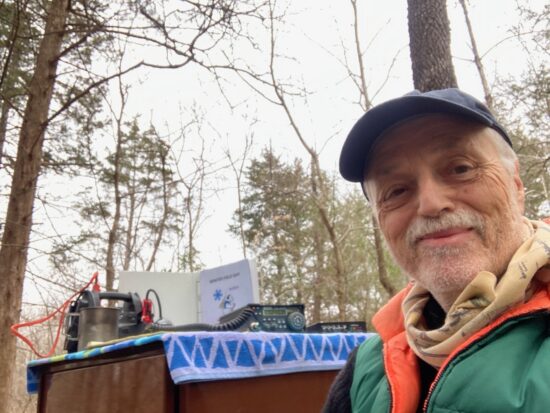
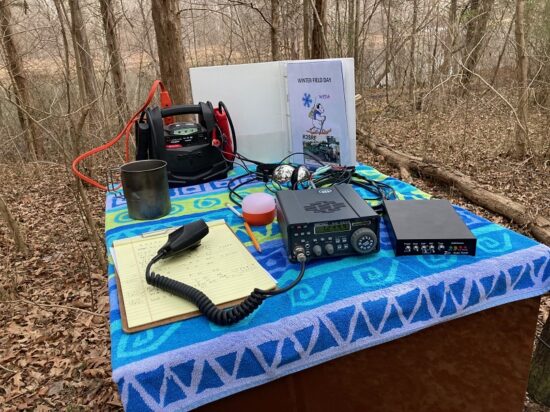
While off air, I used the campground outlets to recharge my battery. I’m open to ideas about a better portable antenna. The Virginia QSO Party may be another opportunity to operating while camping, and in a rare county.
73, Will K3SRF
KC3ULX – Washington, D.C.
For my first Winter Field Day experience, I decided to set up in Fort Reno Park, which is one of my favorite destinations for portable operations near my home QTH in northwest D.C. I set up near the National Park Service marker for Point Reno, the highest natural point in Washington, D.C. at 409 feet above sea level. I thought it might be a fun conversation piece for my WFD QSOs.
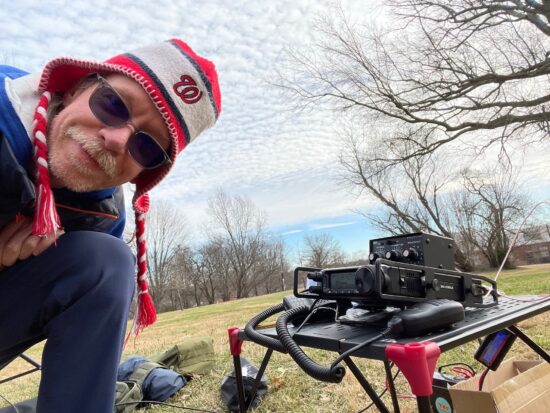
My station setup included a Yaesu FT-891 with a Bioenno LiFePO4 battery and a “Super Antenna” MP1 adjustable-coil vertical whip. I also brought along an HT (FT-60R) and tripod mounted antenna for potential UHF/VHF. I ran the FT-891 at 40 watts output. Day one was beautiful weather, mild and dry (though cloudy). It was a bit windy, however, and my tripod blew over damaging the feed line coax to my HT. So, my VHF prospects were dashed shortly after a short burst of unanswered calls of “CQ CQ Winter Field Day” on 146.52. Moving on to HF, I spent most of my time on 10 meters. There was a ton of activity and a strong path to South America. I made a few contacts, but I spent most of my time tuning around the band listening for a spot to fit in. Several pedestrians who had come to see the Point Reno marker asked about my setup and so it was a nice to talk about amateur radio and Winter Field Day. After a couple of hours, I packed it in for the day.
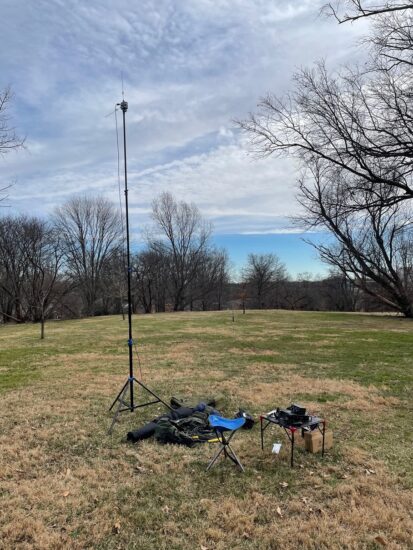
Day Two was much colder and wetter! I set up again in Fort Reno Park, but this time across the field in a spot I favor for regular portable outings overlooking the baseball diamond and a view of the tall buildings along Wisconsin Avenue. On this day my setup was much more minimal: no table or chair, no VHF/UHF, just the FT-891 and a small backpack. As soon as I finished setting up (which takes about 12 minutes) it began to drizzle. I hadn’t made too many contacts, so I decided at least to try to operate on multiple bands. My first and last contact of the day was on 20 meters after tuning around the dial for about an hour. My fingers were getting numb from the wet and cold and I was looking forward to packing up!
All in all, it was a fun experience for a first WFD outing for me. I know I need to call CQ more rather than looking for a pileup to try to break into! I did feel successful, however, because I managed to work three bands (10/20/40) and three countries (US/Canada/Brazil) and Brazil, PY2WLM on 28.443 MHz, was a first for me so that was exciting.
Next year I think I will focus more on increasing my number of contacts, beyond just a handful, but I still had fun and enjoyed being outside and on the air.
73,
Ryan KC3ULX
K4RT – Fairfax County, Virginia
After participating in Winter Field Day from home for several years, I decided last year my next WFD would be a battery powered portable operation. In early January 2023, I loaded up a small wagon with my Icom 706MKIIG transceiver, antenna tuner, spare car battery and power cable, and Hustler mobile antenna and whips, and set off for a test at nearby Wickford Park in Fairfax County. At the park I set up my gear on a picnic table, drove a stake into the ground, clamped the Hustler antenna to it and attached three radial wires spread out on the ground. I made three contacts on 40 meters. I made one more test a week later to work out some kinks, and afterward decided to construct a 40 meter dipole as the Hustler does not have sufficient gain deployed as in a non-mobile configuration. The day before WFD weekend, I tested the set up in my back yard with the newly constructed dipole raised as an inverted-V to about 15 feet and noted tuner settings for all HF bands. I packed everything in and put the 12VDC battery on the charger. I decided my goal would be making 10 WFD contacts before something broke.
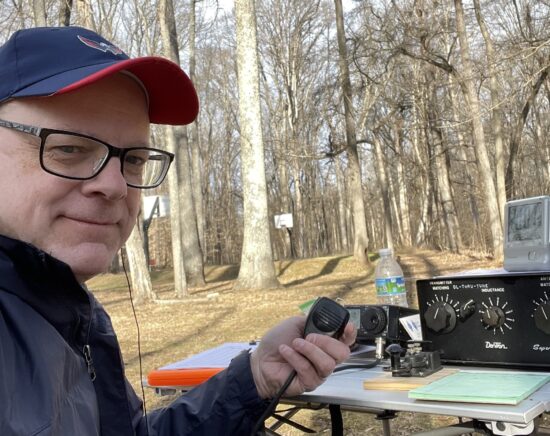
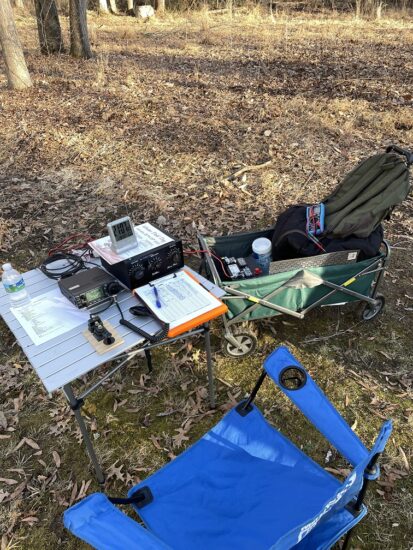
On the first day of WFD I arrived at Wickford Park an hour before the 2:00 p.m. start time and decided to set up at the perimeter of the maintained park lawn. I was able to get the dipole up as an inverted-V to about 20 feet using a tree limb and I used a portable camp table for the gear instead of using a picnic table. Set up took about 45 minutes and by 1:55 p.m. I had everything connected, the battery voltage looked good, and the dipole was tuned for the 40 meter voice band so I called CQ for a test. Dave W8DCH in West Virginia answered my call right away and we had a nice QSO. As the clock struck 2:00 p.m., I asked Dave to be my first WFD contact and he obliged. I continued calling CQ on 40m SSB and there was no shortage of replies. I logged 78 SSB stations the first hour. I switched to 40m CW and worked 10 stations, then moved to 20m and worked 12 stations on SSB. That made 100 WFD contacts as the sun was getting low. The battery still had a good charge on it but I decided to call it a day.
73,
Brad K4RT
Category: Uncategorized










